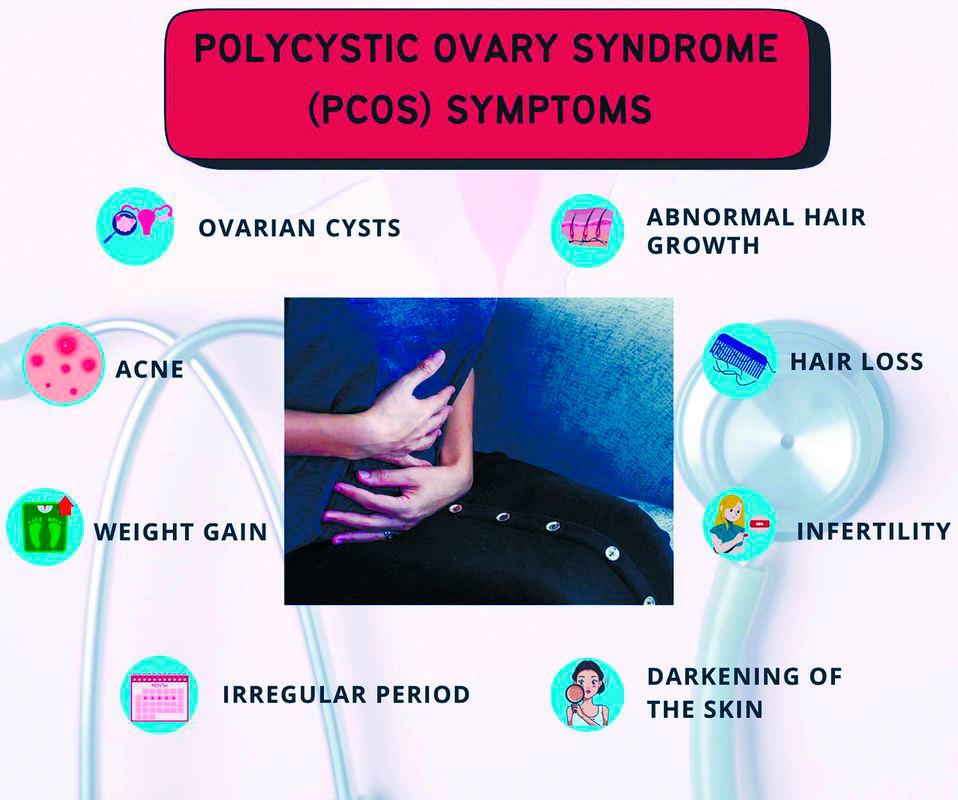PETALING JAYA: Despite affecting between 10% and 12% of Malaysian women of reproductive age, polycystic ovarian syndrome (PCOS) often goes undiagnosed for years and is typically only identified when women encounter fertility problems.
Universiti Putra Malaysia Obstetrics and Gynaecology Department clinical lecturer and specialist Dr Nurul Iftida Basri said most patients are only diagnosed three to five years after the onset of symptoms, noting a growing number of cases among girls aged under 20, driven by obesity rates.
She said PCOS is a condition that disrupts normal ovarian function, leading to hormonal imbalances that interfere with ovulation, causing irregular menstrual cycles or, in some cases, amenorrhoea, in which menstruation ceases for over six months.
“Many patients only see a general practitioner once for menstrual issues.
“Diagnosis requires a pattern observed over time. One visit is not enough. That is why detection is often delayed.”
She said women with the condition face a heightened risk of developing type-two diabetes, hypertension, high cholesterol and cardiovascular disease.
Many are also overweight or obese, exacerbating physical and psychological burdens.
“They often suffer from excessive hair growth and acne, which could impact self-esteem and lead to depression or stress.”
Among the most distressing effects of PCOS is infertility as hormonal imbalances disrupt ovulation, significantly lowering a woman’s chances of conceiving.
“They also tend to have poorer quality oocytes (eggs) compared with their peers,” she added.
While treatment options, such as hormone therapy, ovulation-inducing injections and in vitro fertilisation (IVF), are available through public healthcare, long waiting times remain a major barrier.
“Treatment is affordable within government hospitals but assisted reproductive services, such as IVF, could take years,” she said.
“For menstrual regulation, the cost is usually reasonable.”
The emotional impact of PCOS is also often underestimated.
“Although some women are not immediately troubled by irregular periods, the issue becomes more pressing when fertility is affected. For married couples, it is a source of stress and emotional instability.”
Nurul Iftida said mental health support in PCOS care remains limited and understanding is low despite menstrual health education.
“Schools talk about periods and hygiene but not PCOS. We need more awareness so that women seek treatment early.”
She said financial access is another hurdle because many PCOS-related treatments are not subsidised under national healthcare schemes.
“We need policies that offer financial support for long-term management, especially since PCOS is not curable, only manageable.”
She also said the conversation around hormonal contraceptives is nuanced.
“While many women use them for non-contraceptive benefits, such as acne treatment or menstrual regulation, unsupervised use could carry serious risks.
“Improper use, especially without medical supervision, could result in serious side effects, such as deep vein thrombosis or pulmonary embolism.
“Users should have annual reviews with a medical practitioner.”
She clarified that combined oral contraceptive pills (COCP) are a standard part of PCOS treatment and are safe when used properly.
“It is not harmful to start and stop them with proper guidance. They do not cause irregular cycles if taken appropriately,” she said.
“However, excessive use of emergency contraception, such as the morning-after pill, could disrupt menstrual patterns and complicate the diagnosis of other reproductive disorders.”
Nurul Iftida called for a broader shift in Malaysia’s approach to PCOS from clinical and public health perspectives.
“Medical treatment alone will not work. Women must be supported in making lifestyle changes, such as improving diet, exercising and managing weight, for treatment to be effective.”
She urged policymakers to treat PCOS with greater urgency, and expand insurance coverage and government subsidies for its management.









